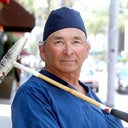Posted underRevision Rhinoplasty q&a
Polly beak deformity: from thick skin, scar tissue, elevated bridge, drooping cartilage, or all? (Photo)
I had a closed rhinoplasty procedure 14 months ago and have developed a polybeak deformity. My surgeon expressed that he wants to do a revision surgery (for free). I'm looking for opinions as to what is causing this deformity. Has my tip dropped bc its lacking support or does it only look droopy bc of the elevated bridge? Is the bulb of my nose still round bc my thick skin heals that way & if so is it safe to to take it in more? Is this a case where simply lowering my bridge will fix all this?
Answers (7)
From board-certified doctors and trusted medical professionals
More Revision Rhinoplasty Questions
See all Revision Rhinoplasty Q&AWE SEND PRETTY
EMAILS
What’s trending? Who’s turning heads? Which TikTok myths need busting? We’ve got you. No fluff, no gatekeeping—just real talk. Get our free, unfiltered newsletter.


